தஞ்சை பெரிய கோயில் தஞ்சாவூர்
One of the best known temples in Tamil Nadu, this much visited temple is an architectural marvel. The tall and massive vimanam is quite impressive and is a milestone in Chola temple construction. The Cholas who had been building and renovating temples for more than a century by the end of the 10th, had acquired quite sophisticated building skills. The great Chola emperor Rajarajan I, commissioned this temple and it was built between 1003 and 1010. Many temples served as inspirations for Rajarajan to build this temple with the Pallava masterpiece, the Kailasanathar at Kanchipuram often quoted as the main one. It was not built at a revered ancient site but a new site was found and a grand temple was built. As such it does not have the same religious significance of the much older temples in the Chola country. Its importance stems from its massive and beautiful construction that reflects the immense power, and aesthetic sense of the Cholas under Rajarajan when the empire was close to its zenith.
The entire complex is built of granite. The huge vimanam dominates the structure. It is 216 feet in height and is built over a garbagriham that houses Shiva in the form of a massive lingam that is 29 feet or two stories in height. The shikaram or kumbam, the bulbous structure that sits on top of the vimanam is made of a single block of granite and is estimated to weigh 25 tons. How they managed to get it up there and position it so precisely, remains a mystery. Several theories exist. They most likely used an earthen ramp and elephants. It is a remarkable feat for the times. The entire complex is surrounded by a moat and is fortified. Although the majority of the construction that we see today dates back to the original effort, some of the mandapams, subsidiary shrines in the prakarams, and the fortifications are from later eras such as the Pandian, Vijayanagar, Nayakkar and Maratha dynastic periods. The massive Nandhi that is in front is from the Nayakkan era. The Nandi that Rajarajan installed sits in one the outer hallways today. It is smaller.
It was originally named Rajarajeswaram when it was built. People called it the Peruvudayar Temple. It is now called the Brihadishvarar temple. The latter name seems to have come into practice during later times. Today most people refer to it as the Thanjavur Big Temple. The temple has had its share of plunder and destruction. The shikaram was once covered in gold. That and much of the treasure that the temple contained have long been lost. During colonial times no worship occurred here for almost a century. British troops desecrated the temple and used it as a fortified armoury.
Compared to later temples the gopurams are much smaller than the giant vimanam. This is because, in the original temples the vimanams were taller than the gopurams. It was in later eras such as the Vijayanagar and the Nayakkan that tall gopurams became prominent features in South Indian temples. The Brihadishvarar temple has two gopurams at its main eastern entrance. The first is the Keralanthakan entranceway built to commemorate Rajarajan's conquest of Kerala and the second one is known as the Rajarajan entranceway. Usually, in Sivan temples the Kodimaram or Dwajasthambam comes before the Nandi and nothing stands between the Nandi and the Lord. Here unusually the Nandi comes before the Kodimaram. There are some other peculiar features.
The temple is today under the control of the ASI, the Archeological Survey of India, although the Maratha Royal Family of Thanjavur, the Bhosle family, still has nominal control. It is a UNESCO World Heritage site. Together with two other Chola era temples, Gangaikondacholapuram and Darasuram, it belongs to the group known as the Great Living Chola Temples. The term is misleading as it implies that these are active temples. They are at best nominally active. They are living in the sense in that they have not been completely destroyed. But true living temples are ones where the eight daily poojas are conducted with ritual precision. They are becoming fewer and fewer. The Brihadishvarar nonetheless is a treasure. It is of immense cultural, spiritual and historical value.
The temple is located in the ancient capital of the Cholas, the town of Thanjavur, about 60 km or an hour drive east of Tiruchirapalli. We visited in July 2012. We stayed in Thanjavur.

Credits: Google Maps

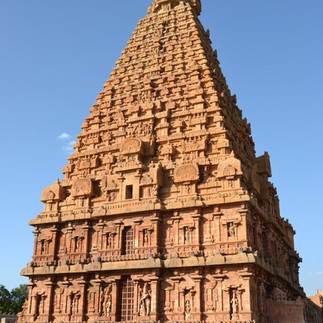



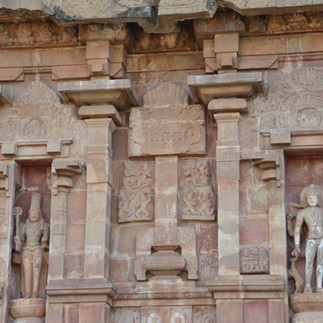

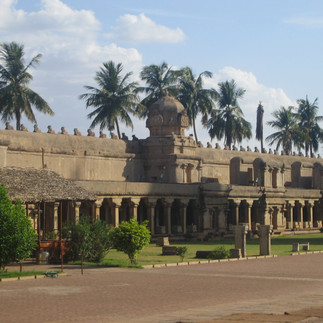

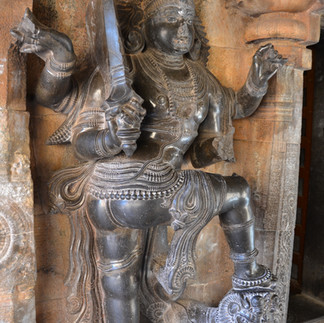







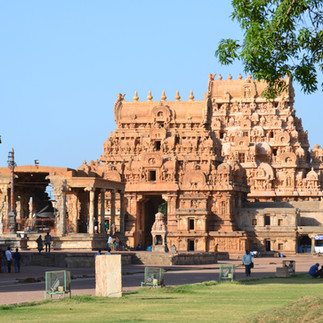











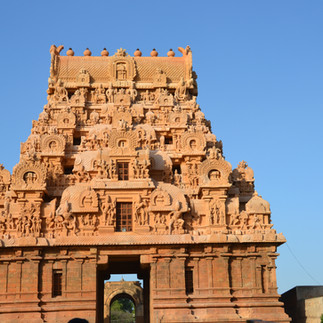
Comments